Basic Water and sanitation facilities are an absolute basic necessity, it plays a vital role in our day to day life. As per the available statistics, 75 per cent of the earth’s surface is covered with water. So without proper water supply and sanitation facility, our daily lives would probably come to a complete standstill. Today much of the world is threatened by increased pressure on natural resources due to the rapidly increasing population. The increased threat has been directly affecting the way of life of the common people. Increased pressure on natural resources such as water and increased pressure on sanitation facilities are a result of ever-increasing population exploitation in the present era. This direct threat has been having adverse effects on the lifestyle as well as the health of the present population of Darjeeling since decades
WATER SUPPLY AND SANITATION IN DARJEELING
Darjeeling is an urban hill town in northern India and faces the major water and sanitation problems provided by the municipality. Darjeeling located in the Mahabharata range or the lesser Himalayas at an average elevation of 6,982ft (2,128m) in Darjeeling Himalayan hill region on the Darjeeling-Jalapahar range that originates in the south from Ghum. The range is Y-shaped with the base resting at Katapahar and Jalapahar and two arms diverging north of Observatory Hill. The northeastern arm dips suddenly and ends in Lebong, while the north-western arm passes through North Point and ends in the valley near Tukver Tea estate.
Established in 1850, the Darjeeling municipality (DMC) is one of the oldest city administrative bodies in India and maintains the city administration of the town, covering an area of 10.57 sq km(4.08 sq mi). The water is tapped from about 26 natural springs which originate in the catchment area of Senchel Forest and Wildlife Sanctuary located about 15 km away from the main town. The water from the springs are collected in an arrester tanks fed to a masonry conduit line( about 8km in length) which brings water on gravity to twin Senchel lakes, which were built in1910 and 1932 respectively, and have a combined storage capacity of 125 million litres. Water from these lakes is pressure filtered at Jorebunglow filter house, from where the water is conveyed through large water mains to reservoirs established at St. Pauls tank capacity being 892,646 litres and that of Rock Ville tank being 56,651 litres (MS tank) 219,600 litres (Masonry tanks). From these reservoirs at two placed water is distributed over the town through subsidiary tanks located various places and also directly through mains of various diameters. There are about 19 nos of distribution mains each from Rockville and St Pauls Tank.
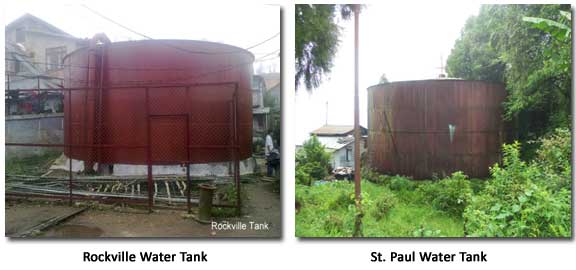
The water supply system is not as dependable as it is age-old and cannot cater to the needs of the present populous. People now depend on natural springs and private water sources for survival. During summer and winter month’s severe water crisis affects the area. Then water is filled in Jerry cans from specific water outlets and taken to residences by the members of the family.
The lack of water has to lead to severe problems with sanitation also. There are no septic tanks in residential areas, creating unhygienic conditions and spread of diseases. Only 30% of Darjeeling has a sanitation system running through it, whose efficiency is questionable. As far as the municipality is concerned, Darjeeling has no extensive sewage disposal system in place leading to uncontrolled sanitation issues that are left unattended to by the authority.
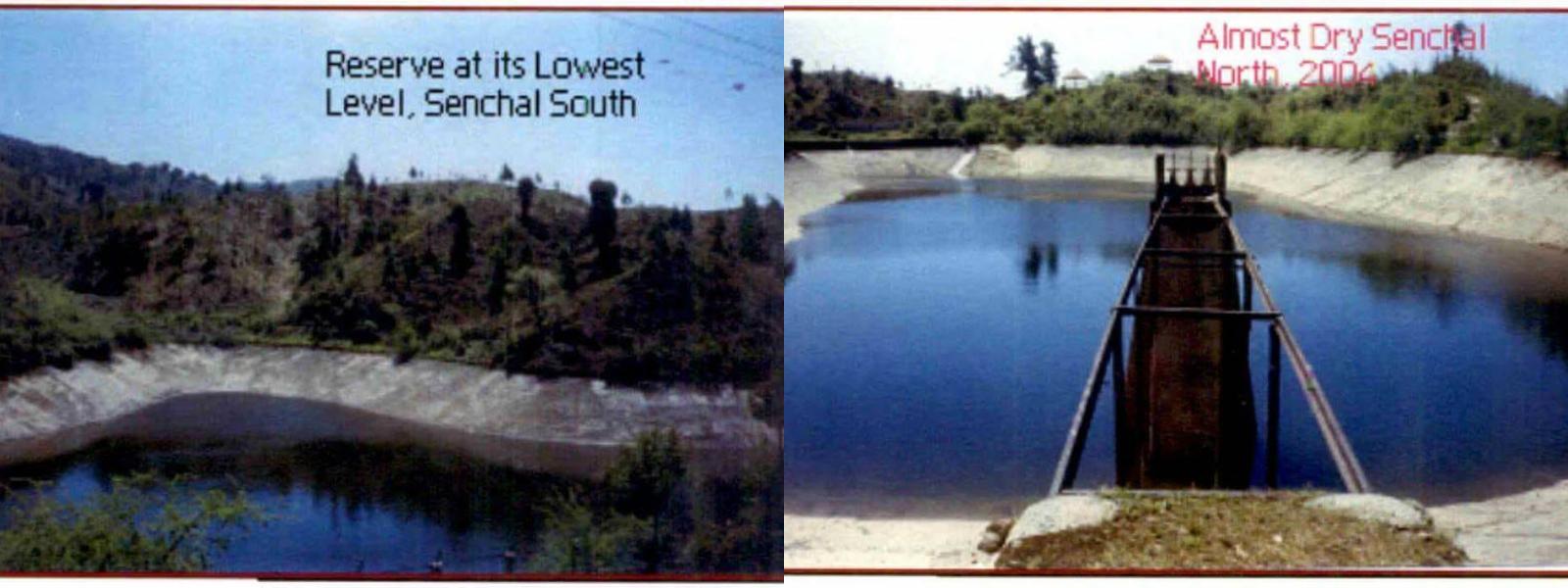
HISTORY OF DARJEELING AND RAPID GROWTH OF POPULATION IN DARJEELING TOWN
Darjeeling during the early years was envisioned as an administrative & a recreational centre. It was planned to sustain a population of 15,000 by the British during the early 1900’s. Later through the ages, due to the mass migration of the people due to growing opportunities post-annexation to the British Empire, the population grew exponentially to a stage where the age-old infrastructure is not able to sustain the present inhabitants of the area efficiently. The lack of infrastructure has lead to an abusive psychology of the people leading to environmental degradation and large-scale pollution of the area. Although various schemes were introduced to counteract the basic problems such as water and sanitation, Darjeeling still remains an isolated area away from proper infrastructure and techniques with amenities necessary for daily livelihood.
The population of the hill station is ever increasing since the region was taken over by the British from the King of Sikkim and developed as a hill resort. It was at first developed as a strategic military outpost due to its geographical advantage over the plains, later it was envisioned as a sanitarium due to its aesthetic and scenic quality. When the East India Company first acquired the area it was stated, 100 people. The heavy forest cover and poor means of communication kept the number limited to those who could make a precarious living from the rough cultivation of forest land and collection of forest products. The decision of the company to develop Darjeeling as a hill resort gave an opportunity to people from neighbouring areas to migrate and take part in the development of Darjeeling.
The original inhabitant’s mostly the Lepchas were rapidly outnumbered by settlers from Nepal and Sikkim. By the year 1850 Dr.Campbell, the first Superintendent reported that the number of inhabitants had risen to 10,000. The rapid influx of people was reported by Sir Joseph Hooker when he visited Darjeeling about the time. When in 1869 a rough census was taken, the total number of residents was found to be over 22,000. The town of Darjeeling has seen fluctuations in the growth of its population. At an average, the hill town has supported an average growth rate of 20% per decade. From 1970 onwards the growth rate of Darjeeling town has far exceeded the growth rate at the district level. The highest growth rate of Darjeeling town was in 1990 with 44.63%, which is far above the national, state and district level rate. In addition to this, the town has to support a floating population of 20,500 in forms of tourist, students, visitors and wage earners (Darjeeling Municipality). At present Darjeeling has a population of 12,000/kmsq and counting. The increased population has lead to mass deforestation and imbalanced ecosystem. The land is now more vulnerable to natural calamities such as landslides and has a huge pressure on it for basic resources and facilities such as water and sanitation.
WHY SHOULD WE BE AWARE??
1. PRESENT CONDITION OF WATER SUPPLY IN DARJEELING
The existing water supply installations were meant for a population of 15,000 during the year 1910-1915, thereafter a number of water supply installations, like Khangkhola Station, Rambi water line, Singdhap Lake (capacity 15 million gallons), Bangla Khola were added but this could not cope up with the rapid rise of population as a result there is acute water shortage during the dry months of December to May. The crisis during the last few years has reached its zenith due to a rapid decline in the water volume available at the catchments due to the rapid illegal felling of trees. The present population of Darjeeling town is in lakhs and with the added floating population the pressure toll on water supply increases exponentially.
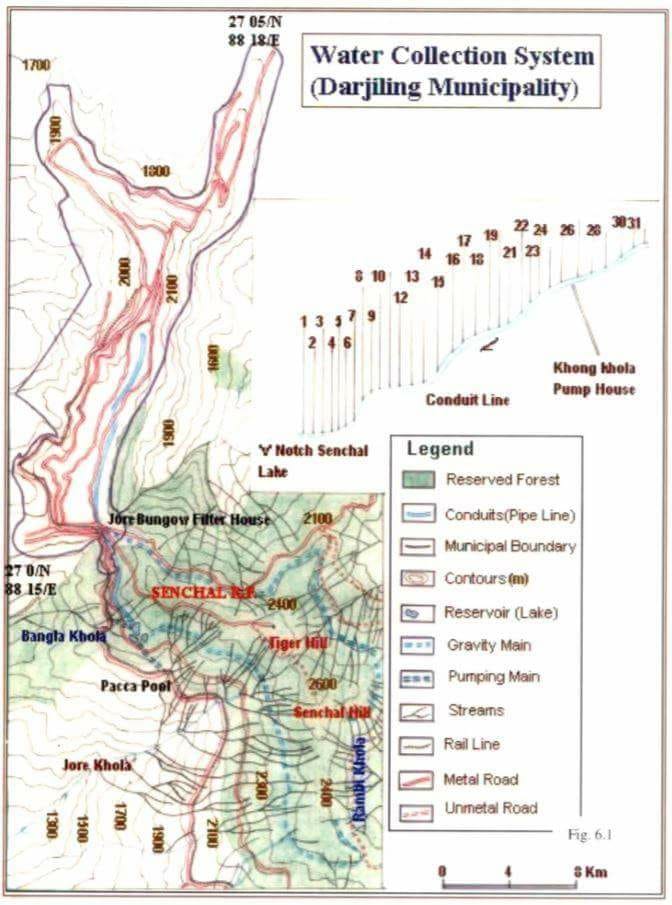
2. PRESENT CONDITION OF SANITATION IN DARJEELING
The town of Darjeeling suffers from poor sanitation conditions. The administration does not properly manage liquid and solid wastes leading to rampant land pollution of the area. Here around 22% of households have no latrine facility. Squatter settlement dwellers depend on public toilets which are not adequately build compared to the demand. Out of the total which is about 27,135 there are only 109 public toilets in different parts of the city. According to field survey, an average of 30 to 50 families is dependent on public toilet blocks. Constantly blockage of public latrines due to lack of water and disposal of paper is a common phenomenon which is not repaired regularly checked leading to unusable conditions and an unhealthy hygiene. During the monsoon and winter seasons, people detest going too far off places to defecate leading to open spaces and drains to serve as toilets.
3. DEFORESTATION AND RAPID DECLINE IN THE YIELD OF JHORAS
Rainwater stored in catchments seeps down creating cavities and underground channels for clearance. The construction of the underground channel is not possible due to the 21 ft die masonry wall, and thus the supply from the lake is less and lake water cannot be allowed to rise due to the hydrostatic pressure that may build up due to seepage of water which is directly proportional to the water stored and thus the lake level needs to be kept in constant check. The result was the attempt to improve the storage pools were in vain leading the system supply to remain at the 1932 stage wherein it would supply water to a population of 21,000. Since the residential population has increased five folds and also with the added increases floating population and thus the supply cannot keep pace with demand.
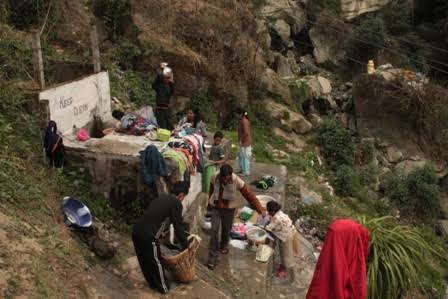
3.1 THE MECHANISM OF WATER CATCHMENTS
The soil having a deep forest cover act as a sponge and absorb huge amounts of water immediately after rainfall and release it slowly through natural drainages that have been created by decades of surface water erosion. This helps the water drainages locally known as jhoras to supply water during the dry periods. In spite of lack of rainwater, this run off the water was collected in the Senchel catchments for distribution. Recently as the forests cover has depleted due to the rapid illegal felling of trees, the runoff and drainage of water have become easier leading to less amount of water storage in the Senchel catchments thus, reducing the residence time of water on the slope.
4. THE ABUSIVE MENTALITY TOWARDS WATER RESOURCES OF THE LOCALS, LEAKAGE AND ILLEGAL TAPPINGS
The leakage and tapping of water lead to the beneficiary to receive less amount of quantity of water than the supplied amount leading to poor supply at the receiving end. Pollutants easily enter pipelines due to leakage as supply line run kilometres from the Senchel catchments leading to people falling prey to locally water-borne diseases. The govt supplied quarters and colleges have run out of water supply due to illegal tapings somewhere before the terminal. The illegal tapings have been a nuisance due to the uphill slope of the hill station as many pipelines area laid through inaccessible slopes covered with jungles and debris and soil, identification of the tapping points is also cumbersome. It also complains that some illegal tapings and diversion of water from the actual receiver are done for monetary benefits. This creates as receivers will pay the tax to the administration but not receive very less supply due to illegal tapping lines.
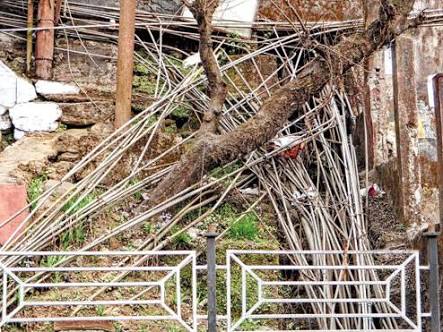
5. DISRUPTION OF SUPPLY DUE TO FREQUENT LANDSLIDES
The slope instability is the main problem in the water supply of Darjeeling. About 3000 ft length of the supply pipeline lies on the Eastern slope of the Jalpahar ridge which is prone to frequent landslide especially during the rainy season. The hills are composed of loose rocks over steep slopes varying from 10 to 50 degrees. The dip of the hill is quite steep. The slope in the upper precinct is about 45 degrees and along the main pipeline is about 25 degrees and a few feet below it dips to about 60 degrees for a distance of 25 feet and to around 45 degrees to Kolkata road. This angle of gradient of the slopes makes the hill station vulnerable to rapid landslides, as the saturated soil starts flowing down the slope due to lubrication and increased the wet bulk of the material the sinking and slip of the topsoil lead to the destruction of pipelines. In 2006 nearly 150m of pipeline meant for water transfer of water from Jorebunglow filter house to St. Pauls tank was destroyed which affected the tourism in the upcoming puja season. Also, there are reported issues of loss of life and damage to property.
6. TRANSPORTATION OF WATER BY MOBILE WATER TANKS, HAND CARTS AND PORTERS
During the crisis period, people resort to depending on private water sources in the form of water supply tanks, supply handcarts and porters. The municipality during this period deploys (14-20 vehicle) to collect water from Rogbull area( 16 km south from the town). This temporary arrangement made by the municipality is of little consequence to those who live away from the main roads, where the vehicle cannot enter and also to those who live upslope of the main road, where water cannot reach. The supply is also small and sometimes there is tight competition to obtain water which exposes the social split between the rich the poor and the non-locals.
Handcarts are alternates for such crisis but are too expensive for the poorer sections of the society. In a cart 16 pots of 15 litres each amount to around Rs 150 /- during the crisis season it may amount to around Rs 200/-. The cost is too high for households that require about 160liters of water per day. Around 40 such carts supply water to hotels and residences which are not connected to the municipal supply. If the customer buys water on a regular basis this mode is dependable but for someone who makes use of it only during the crisis season, the mode is less dependable.
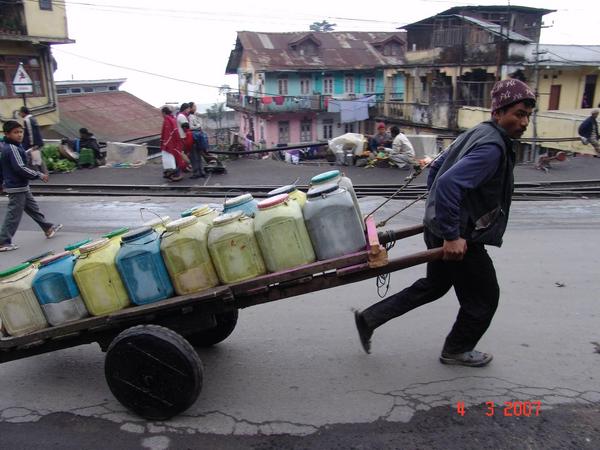
CONCLUSION
Over years of exploitation of Darjeeling, it has now almost succumbed to every unsustainable malpractice that we have to know of. It is no longer an eye candy as a serene hill station. The locals term the small hill station as “the queen of the hills”. Little though can they fathom how the hill town has been trying to precariously balance the livelihood of its inhabitants. Rapid growing population demand and the unwillingness & unawareness of the locals to adapt to new ways to preserve a better life for their future generations have had adverse effects on the natural mechanism of the hills. The natural scape of the hills at present is unable to cater to the abusive needs of lakhs of the population residing in the area. Thus, we need to teach ourselves to be tolerant and come up with new ways to outsmart the daily abuse by adopting new techniques to solve their ever increasing problems of water and sanitation because if such practices continue to work then a bleak future is whats left for not only our “queen of the hills” but also our future generations.
[Writes – Ananta Rai]

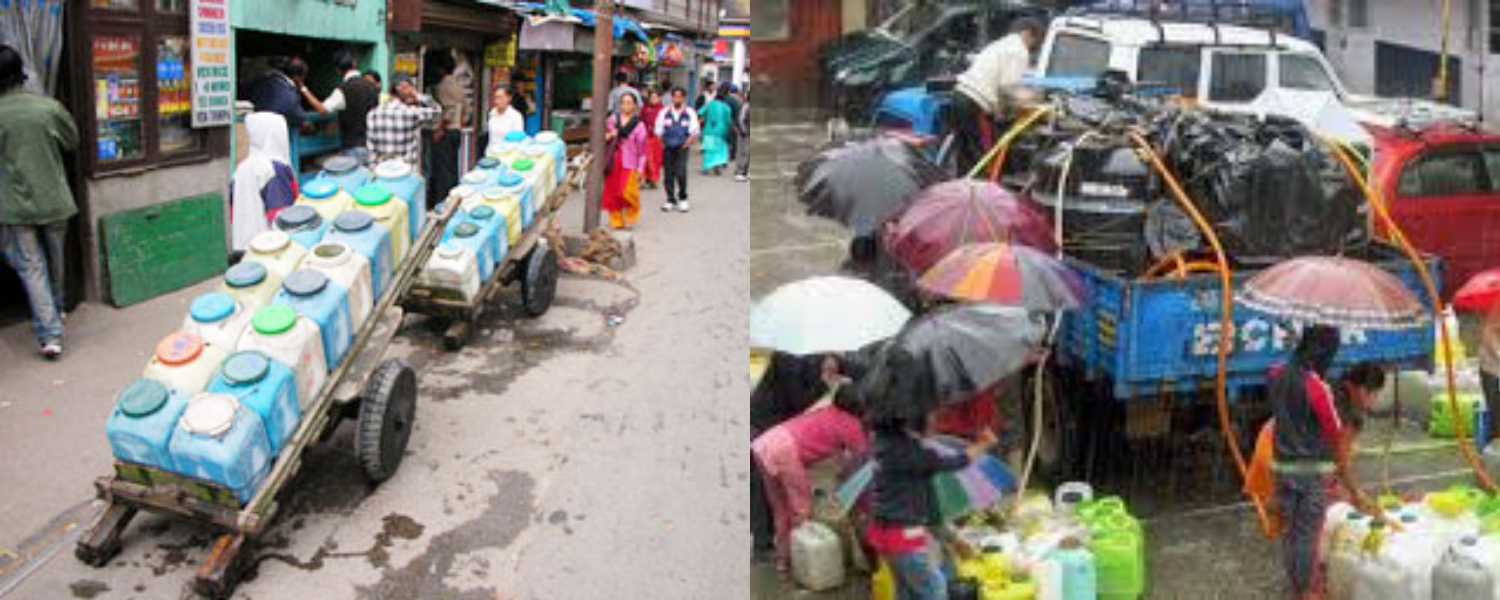



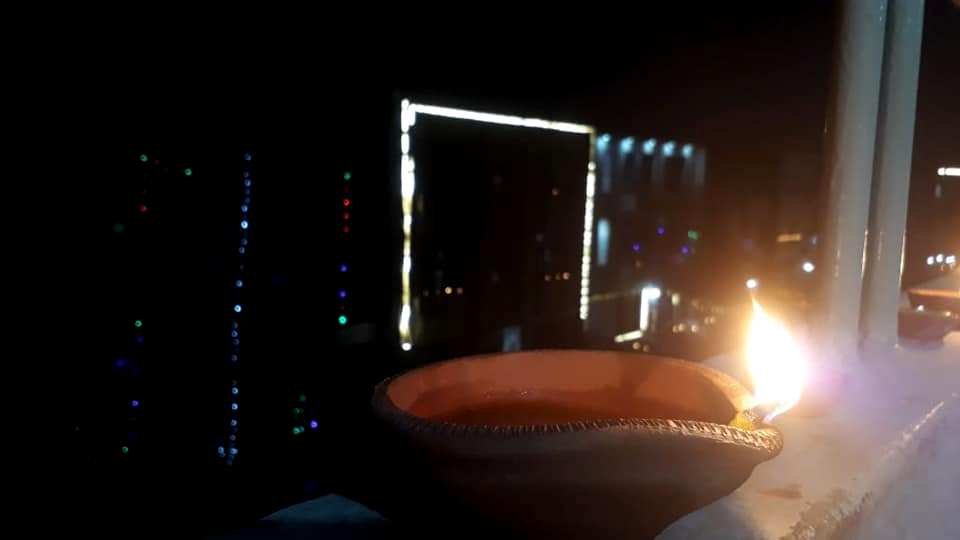
Can you connect me to the writer of this article?